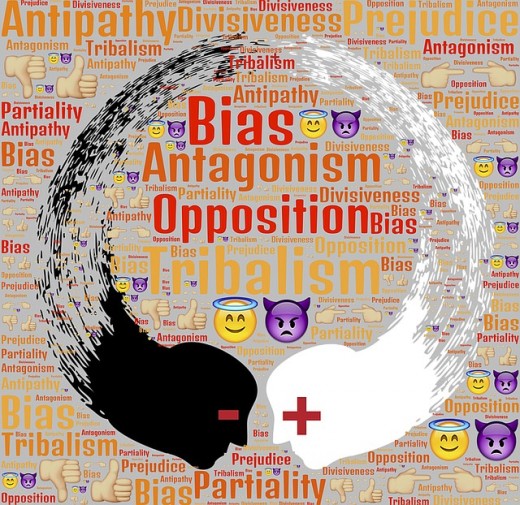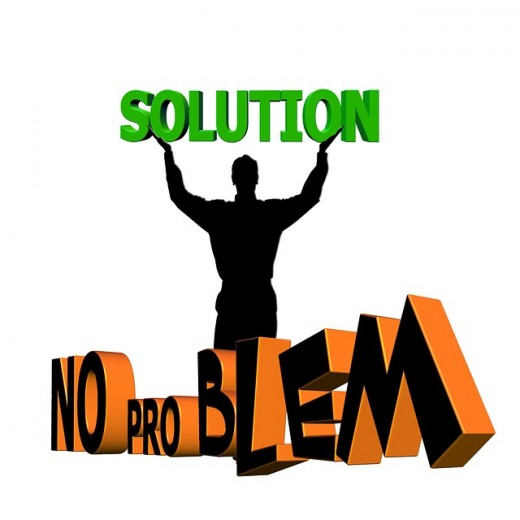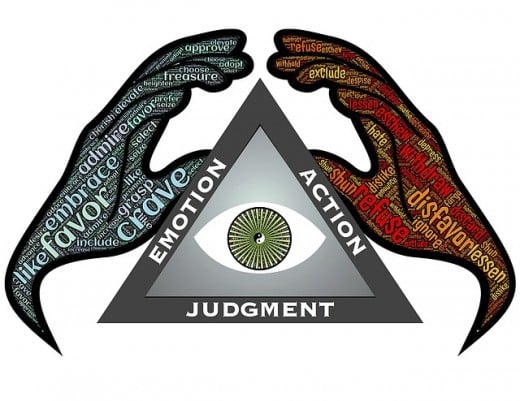Conflicts at Workplace? Resolve Them Amicably
"A good manager doesn't try to eliminate conflict; he tries to keep it from wasting the energies of his people. If you're the boss and your people fight you openly when they think that you are wrong--that's healthy."
- Robert Townsend
"The more we run from conflict, the more it masters us; the more we try to avoid it, the more it controls us; the less we fear conflict, the less it confuses us; the less we deny our differences, the less they divide us."
- David Augsburger

It is rare that two people resemble identical in every aspect, so as their thinking. More often the differences in their opinions lead to conflicts. It is quite common that conflicts do happen in almost every workplace, which is OK as long as it is in control and not affecting your work. But, ignoring it for a longer period may prove fatal when it takes the shape of demon to ruins your project's path of success.
At the workplaces, when you are a team lead or a manager your responsibility multiplies, it is not only to carry your work to making the project success but also taking the team with you by resolving theirs each and every conflicts. But, when dealing with the conflict situations, the bigger risk is that any unsuccessful resolution can hamper the team’s productivity as well as can derail the project from the path of progress.

What is Workplace Conflict?
Let's assume that as a manager you are appointed to manage a team of twenty people to work in a fixed duration project. The team formed with the resources pulled from different projects. Initially, they were happy folk understanding their responsibilities, studying the project requirements etc.
But, once the work has started to its full flow, the frictions began to roll. Everyone has their own working style. So, when working together some adjusts with others, while few resists. That is when the conflict arises. You noticed that two of your team members want to work on same software but you have only single user license.
So, in order to resolve this conflict, either you will buy another license or you need to convince both of them to use in shifts. That is one example of conflict. Let's discuss the various sources of conflicts in the workplace.

Why the Conflicts Takes Place
There are various reasons behind a workplace conflict; it may be differences in opinion, extreme work pressure, unrealistic work schedule, clashes in individual personality and much more.
It is not like that conflicts are only happens within the team or team members. It can be between two departments or two projects while sharing project resources or with your clients due to some unrealistic demands or forcing you to shorter the work schedules.
Whatever the reason, it is better to try resolving the conflicts before it resultant negative impacts on your project. A timely resolution is required to keep your team's productivity intact to achieve the project's goal.
Let's discuss the various sources of conflicts.

The various sources of conflicts
Tight work Schedules
More often tight work schedules are one of the top reasons for workplace conflicts. Everybody in the team wants to clear their plate before the final bell rings. Such turbulent environment creates conflicts situations when they need to share the resources to get the work done. It is highly recommended to create a proper strategy to deal with those situations in order to reduce conflicts.
Policy Changes
You cannot control over the organizational wide changes in various policies, whether it is a change in Human Resources, Finance or Employee welfares. This may create resentments among few people when they got affected by the changes and that led to conflicts. But, what you should do is, minimize the impacts on the team by maintaining the transparency and make them understand the actual changes.

Individual Personality
As we know, every person has their own personality and different working styles, but when two different personalities come together, either they adjust each other or try to impose one view on another. That is where conflict arises. There are various techniques to deal with such conflicts, we will discuss on them later.
Conflicts over Ideas
You may welcome ideas from your team members for any important issues. But sometimes it proves to be fatal when they compete with each other to prove their intelligence. Healthy competition is encouraged but rat race should be discouraged. So, it is good to justify the selected ideas without giving any undue advantage to any. That can avoid the conflict situation.
Also, there are other reasons which create conflicts in the team, such as poor communication, confusions, bias decisions, an undue favor to someone or group, economic recession, cost-cutting measures etc.
It is not that conflicts are always evil for your team; conflicts can be used as a booster to the team's creativity if managed properly. You may get some best ideas out of the pool of ideas which can be applied for the betterment of the project.
The team leads or the managers should know the necessary techniques to resolve the conflicts which will be a win-win situation for both the team and the project at large.
It is important to take the right decision at right time; some conflicts may not need your immediate interference. So, it is upon your judging capabilities to decide when to intervene.
Let’s discuss some of the conflict resolution techniques, which are also recommended in PMBOK.

How to Resolve Conflicts Using the Various Techniques
Avoid it for the moment (Avoiding)
At times, the situations are such that you are not in a position to deal with the conflicts. That may be due to some other highly important task which needs more attention than the conflicts. Or it may be you are seeing that the conflicts can be resolved by its own and does not need your interference.
In those situations, you can avoid the conflicts by taking the backseat. But that can be backfired if you keep ignoring for a longer time. Also, it may send the signal to the team that either you are not capable of resolving the conflicts or supporting it by being silent.
Pacify the Conflicts (Accommodating)
This technique focuses on the area of agreement rather than the differences. To maintain the peace you need to convince one of the parties to compromise his/her needs to fulfill the need of others. It can be a short-term relief from the turbulent situation, but the best thing is that you will get some time to find a solution to resolve the conflicts.
Compromise with the conflicts (Reconciling)
Sometimes, due to certain situations, you need to agree to the demands of both the parties for the sake of the project goals. Let's consider our earlier example when two members are fighting to work on single software. So, as your project is going through a crucial stage and you do not want to upset any resource, you have to buy two licenses for each of them. Though it is not the complete solution but at the certain situation, it helps to pacify the issue up to some extent. Also, provide you some time to find an amicable solution later.

Solve the problem - Resolve the conflicts (Collaborating)
It is the best one out of all these techniques, as it suggests acceptable solutions, though it is not possible to get that solution always. This technique suggests union of all the ideas given by both the parties and finds out a win-win solution which is accepted to all.
It addresses the actual problem and resolves it to establish bilateral trust and respect. As it needs enough time to find out the solution that is acceptable to all, so it may not work when you are running out of time to deliver the project goals.

My way or the Highway (Forcing)
This is an autocratic approach, where you consider one's opinion at the cost of others. You take only one's viewpoint and strongly apply it without listening others opinions.
This is a win-lose solution and not advisable to apply unless the conflicts are hampering the project goals seriously and you need to take a firm decision for the benefit of the project.
Conflicts in the workplace are very common but the manager should have equipped with these techniques to deal with that situations. It is better to douse the flame of conflicts as early as possible before it goes out of your hand and burns the path of project's progress.
Have your ever resolved a conflict using one of these techniques? If yes, select the technique.
© 2017 Kishor Mohanty








